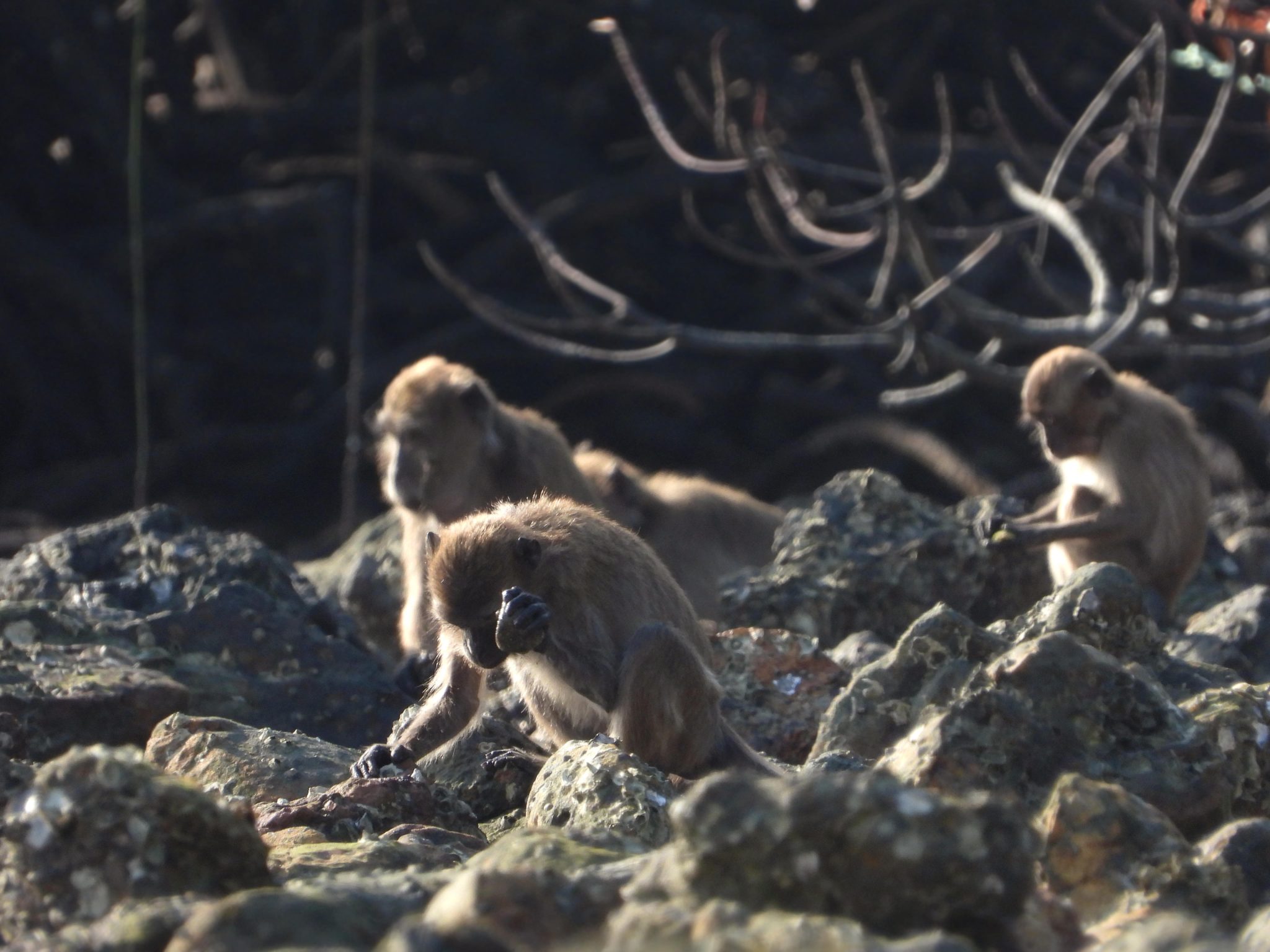

Example of a long-tailed macaque using a stone tool to reach food. Credit: Lydia V. Luncz
Macaques inadvertently created stone fragments resembling some of the earliest stone artifacts made by early hominins.
The study focuses on new analyzes of stone tools used by long-tailed macaques in Phang Nga National Park in Thailand. These primates use stone tools to open hard-shelled nuts, often causing hammer and anvil stones to break in the process.
The collection of fragmented stones resulting from this process is of considerable size and widely distributed across the terrain. Furthermore, many of the artifacts display the same traits usually associated with purposefully designed stone tools found at some of the oldest archaeological sites in East Africa.
“The ability to intentionally make sharp stone flakes is seen as a crucial point in hominin evolution, and understanding how and when this happened is a huge question that is typically investigated through the study of artifacts and past fossils. Our study shows that stone tool production is not unique to humans. And our ancestors,” says lead author Tomos Profet, a researcher at the Max Planck Institute for Evolutionary Anthropology.
“The fact that these macaques use stone tools to process nuts is not surprising, because they also use tools to access various shellfish as well. What is interesting is that, in doing so, they inadvertently produce an important archaeological record of their own that is partially indistinguishable from some Hominin Artifacts”.

Examples of sharp-edged chips inadvertently produced by long-tailed macaques. Credit: Proffitt et al, 2023
New insights into the evolution of stone tool technology
By comparing the accidentally produced stone artifacts made by macaques with those found at some of the earliest archaeological sites, the researchers were able to show that many of the artifacts produced by the monkeys fall within the range of those commonly associated with early hominins.
Co-author Jonathan Reeves highlights: “The fact that these artifacts can be produced by cracking nuts has implications for the range of behaviors we associate with sharp chips in the archaeological record..”
The newly discovered stone tools provide new insights into how the first technology emerged in our earliest ancestors and that their origin may be related to similar nut cracking behavior which may be much older than the oldest current archaeological record.
Cracking nuts with stone hammers and anvils, similar to what some primates do today, has been suggested by some as a possible precursor to intentional stone tool production. This study, together with previous studies published by our group, opens the door to the ability to identify such an archaeological signature. In the future, says Lydia Lonks, senior author of the study and head of the Technological Primate Research Group at the Max Planck Institute for Evolutionary Anthropology.
“This discovery shows how living primates can help researchers investigate the origin and evolution of tool use in our own lineage.”
Reference: “Wild Macaques Challenging the Origin of Deliberate Tool Production” by Tomos Profitt, and Jonathan S. Reeves, David R Brown, Suchinda Malaivijitnund, Lydia V. Lunks, March 10, 2023, Available Here. DOI: 10.1126/sciadv.ade8159

“Web maven. Infuriatingly humble beer geek. Bacon fanatic. Typical creator. Music expert.”





More Stories
Scientists confirm that monkeys do not have time to write Shakespeare: ScienceAlert
SpaceX launches 23 Starlink satellites from Florida (video and photos)
A new 3D map reveals strange, glowing filaments surrounding the supernova